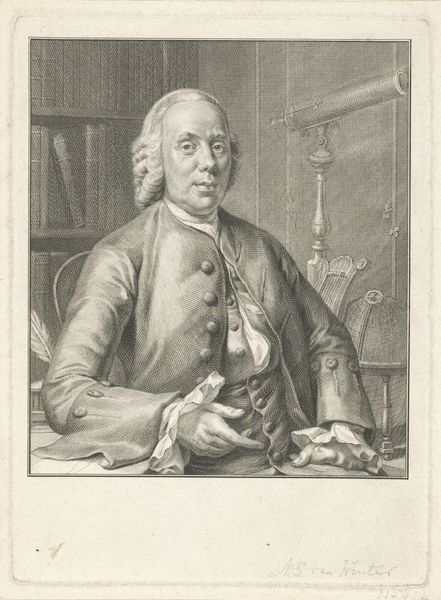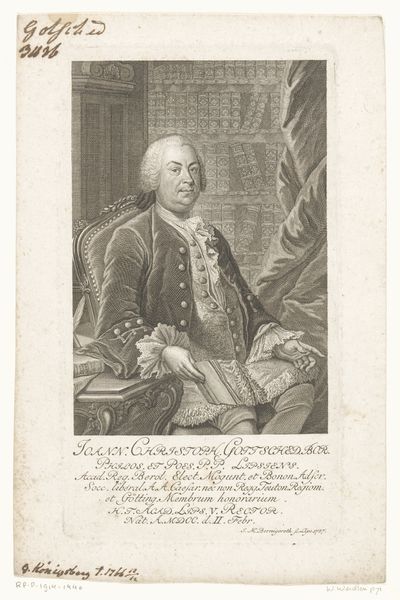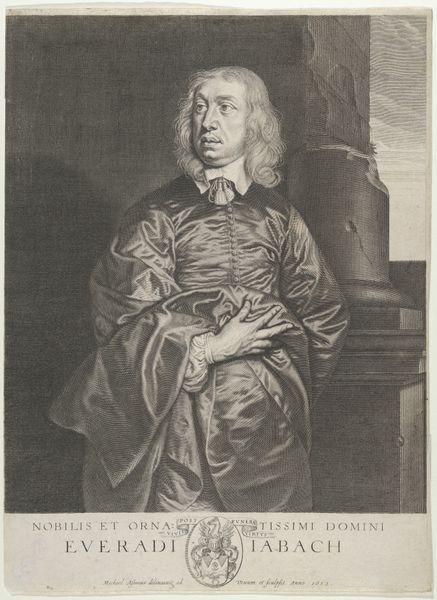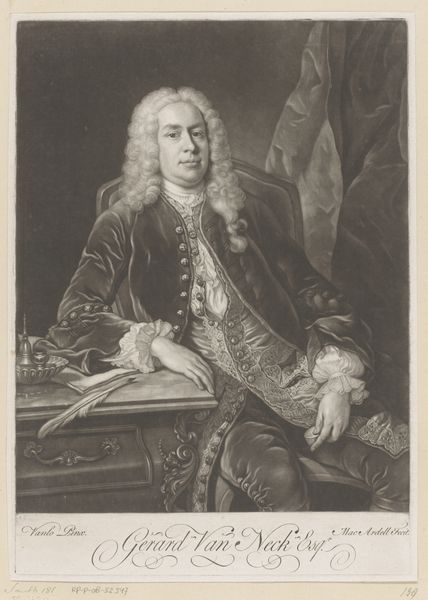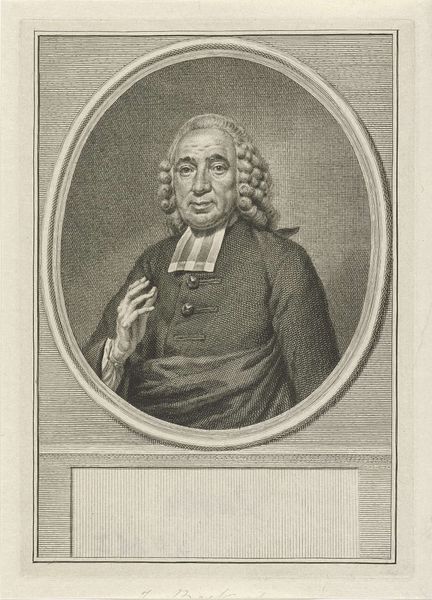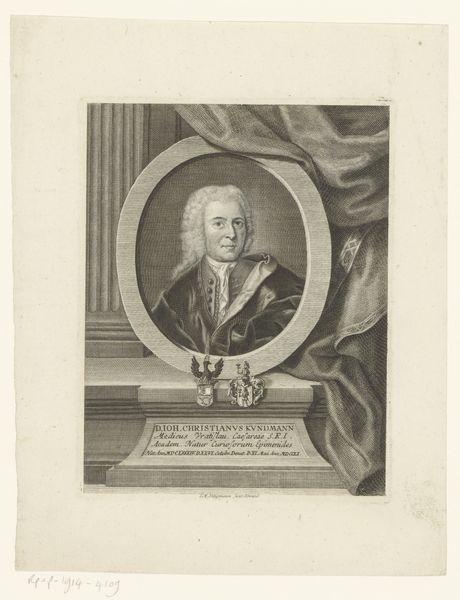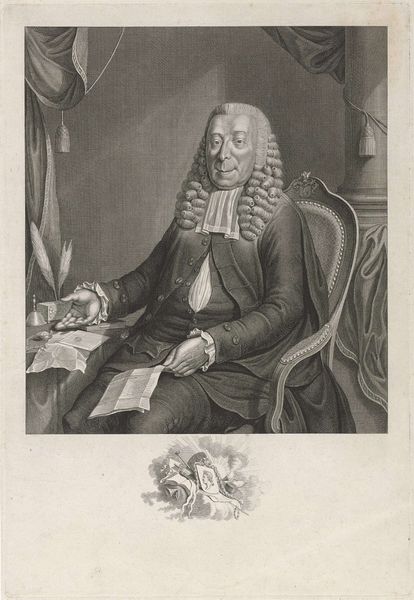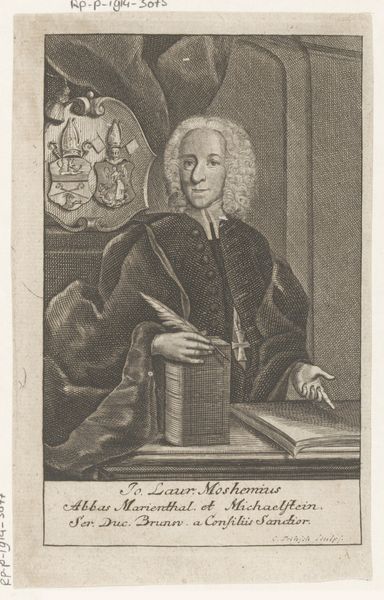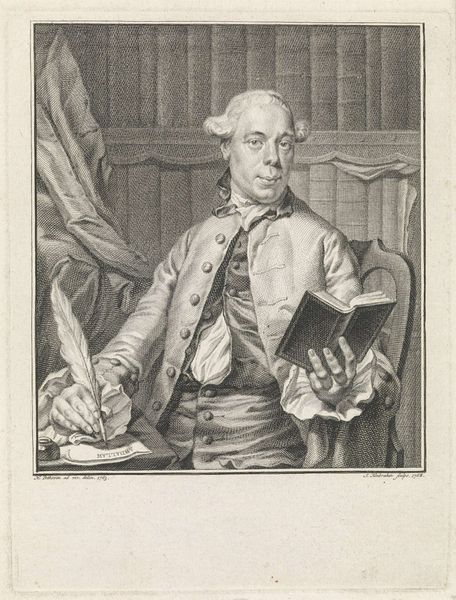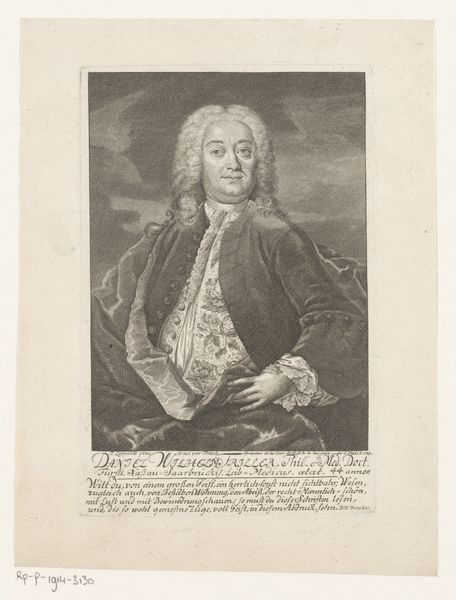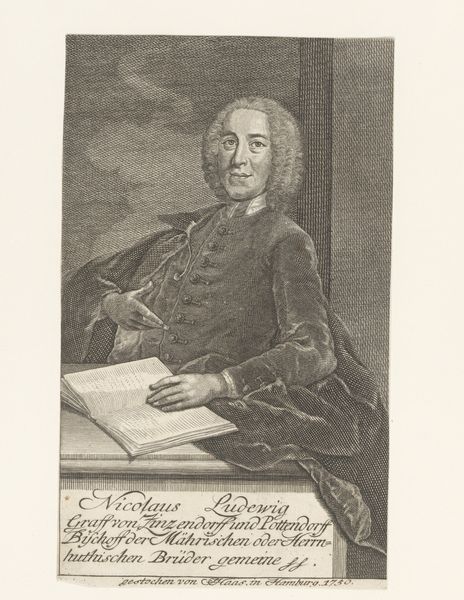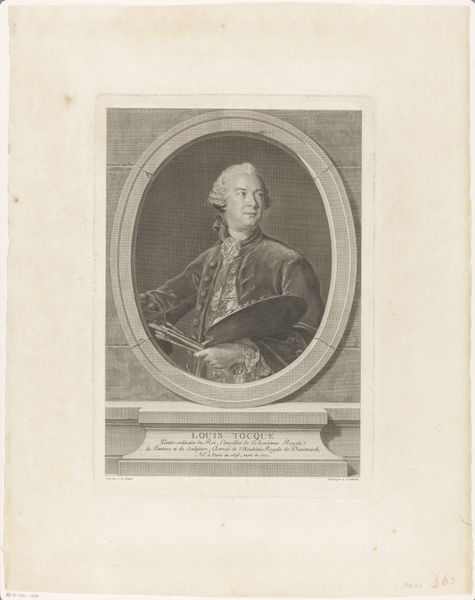
Dimensions: height 188 mm, width 138 mm
Copyright: Rijks Museum: Open Domain
Jacob Houbraken made this engraving of Sybrand Feitama sometime between 1698 and 1780. The portrait memorializes a man of letters, depicting Feitama with a quill, poised over a manuscript. This image operates within very particular cultural codes. During this era, portraits were more than just likenesses; they were carefully constructed statements about social standing, intellectual prowess, and cultural values. Feitama’s identity as a poet, critic, and collector is proclaimed through his elegant attire and the scholarly setting. The books and writing implements aren't just props, but symbols of his engagement with the world of ideas and art. Portraits such as this perpetuated the prominence of a certain class and intellectual elite, reinforcing societal hierarchies. What stories and faces are excluded from the historical record when only certain members of society are immortalized in art? Consider the power dynamics at play when we look at historical portraits. Whose stories are told, and whose are silenced?
Comments
No comments
Be the first to comment and join the conversation on the ultimate creative platform.
